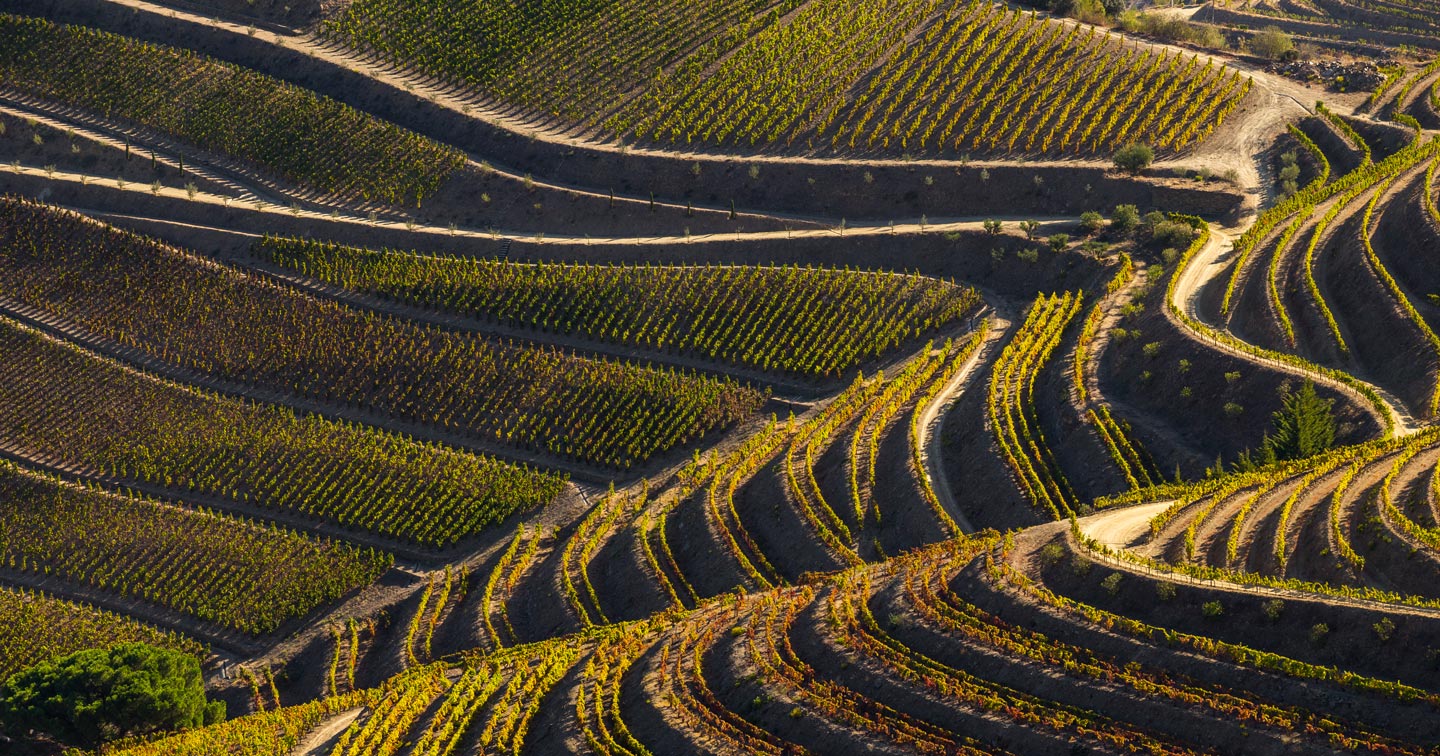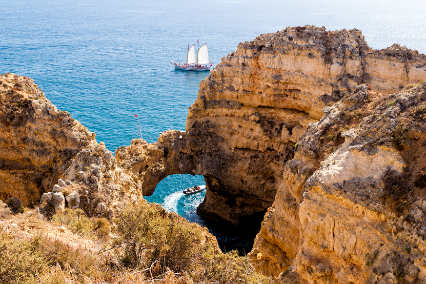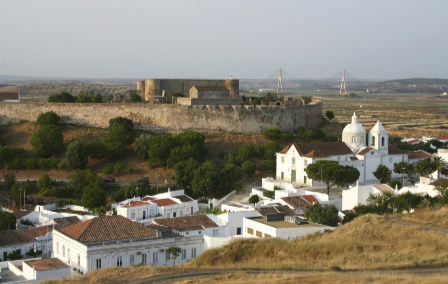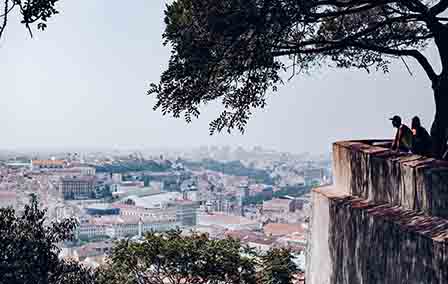Published 28th Jun. 2021
Reading time
Home to the oldest bookshop in the world, Portugal sets the scene for you to create your own story with its abundance of possibilities for sun-seekers, sailors, surfers and loafers alike. The Algarve and the Alentejo, both in the south of the country, are two of Original Travel's favourite Portuguese holiday destinations; both are home to the obligatory beautiful beaches but there's plenty more to explore besides. And here's why we love them so much...
If you're the proud parents of a perfect progeny or two (or just want somewhere for your little monsters to run wild) then we have good news; the Algarve is home to an abundance of activities for all the family to enjoy. If you want to learn the ropes of sailing, there's no better place for aspiring Long John Silvers to get their sea legs than on a pirate ship trip around the stunning coastline on a unique boating adventure. Or, if you'd rather be in the water than on it, the Algarve is home to the best surf camp in Portugal, not to mention the likes of kitesurfing and windsurfing et al. Land lubbers needn't miss out though, the tiny village of Benagil is home to one of the most jaw droppingly beautiful sea caves in the world, a must-visit for keen photographers.
Much like the Algarve, the Alentejo has it all covered for families with 18th century palaces, panoramic countryside vistas and a rugged coastline in the Peninha Sanctuary. For a spot of culture, Evora, a UNESCO World Heritage Site, has lived several historic lives. Known as the 'museum city' because of its monuments, Evora belonged to the Romans until the fifth century, the Visigoths until the eighth century and then finally the Portuguese since 1165. That should pack a cultural punch!
The Algarve is also a fabulously romantic setting with some seriously picturesque surroundings. Historic city centres give you the opportunity to wander through and appreciate the centuries of architecture the Algarve has to offer. For an even more atmospheric experience, the town of Lagos (not to be confused with its Nigerian counterpart) is home to narrow cobbled streets brimming with life. We can arrange a table for two at the best restaurants around where you can listen to local jazz musicians as they serenade you throughout the evening.
The Alentejo is one of Europe's finest under-the-radar romantic havens. The Castelo da Rainha Santa Isabel's lively Saturday markets and drool-worthy views are surely the perfect place to kick off a Portuguese mini-break. The Alentejo is all about cork, pork and walk so combining the three on a cork tour and lunch in the countryside is a great way to get to know the region. For a more relaxing experience, the Float in Spa in Lisbon provides an innovative method of relaxation through floatation therapy, where you can both drift off (hopefully not literally) into bliss.
Believe it or not, there are plenty of fun activities in the Algarve that don't involve a beach. One of the best is a visit to the Ria Formosa National Park. Here hides a natural paradise where a labyrinth of canals and islands protect migratory bird species such as the Wigeon, Curlew and Bar-tailed Godwit. As well as this, a network of sea taxis and ferries mean visitors can island-hop their way around the national park's freshwater lakes. Prefer a more rugged landscape? How about an eight mile hike to reach the 2,959ft summit of Mount Fóia? Part of the Monique Mountain range, Mount Fóia is the highest mountain in the Algarve and the view from the top is a real showstopper. Sensible shoes are a must.
You can't visit the Alentejo without heading out onto some of the walking routes of Rota Vicentina, a scenic network of hiking trails in the Southwest Alentejo and Costa Vicentina Nature Park. Whichever route you take, there will be beautiful landscapes, flora and fauna and rural sites with centuries of history. Along the coastline, and travelling on foot at low tide (and always with an expert local guide), explore caves, crevices and climbing rocks, discovering secrets of the land which are normally submerged beneath the waves.

Swap the Algarve’s Brit-packed beaches for charming fishing villages, hidden bays and nature reserves on a holiday organised by our passionate Portugal team. We’ve done the hard work for you, getting under the skin of Lisbon, the Duoro Valley, the Azores and more, scouting out the best experiences and properties. Whether you’re after olive oil tasting, hiking routes in Rota Vicentina or a woodland lodge at Furnas Lake, we’ve got you covered. If questions spring to mind while in the country, fear not. Our knowledgeable guides and Concierges will be on hand to answer burning curiosities, like where to find the best pastéis de nata.
ENQUIRE NOWPractical advice and inspiration for your next trip

Ah, the Algarve: a veritable treasure trove of sun-kissed beaches, charming architecture and postcard-pretty landscapes. While this gorgeous region in southern Portugal is sometimes considered a tad touristy, there is far more to the Algarve than just sangria and sunbathing. With a coastline spanning almost 100 miles, a rich and varied culture and historical site aplenty, there’s an abundance of things to do in the Algarve.
11th June 2025 - Portugal Travel Inspiration

Portugal in October is all about being outdoors. Summer crowds are long gone, the sun still lingers in the south and the west welcomes powerful waves with skilled surfers in tow. To admire the landscape in all its golden glory, hike or bike around Alentejo and the Algarve or enjoy serene sightseeing in Lisbon. Alternatively, call in the wine season with a trip to the verdant vineyards of Douro Valley.
27th February 2025 - Portugal Travel Inspiration

For a long time, the average holiday in Portugal centred around the sun-soaked beaches and manicured golf courses of the Algarve. But today, Portugal can confidently challenge Spain and Italy as the host of some of Europe’s best city breaks. The warm Mediterranean climate, rich history and culture and delicious cuisine attract millions of visitors each year, with the country enjoying record-breaking tourism revenue in 2024.
4th December 2024 - Portugal Big Short Breaks

Our team of destination experts will get to know you and your unique requirements for your holiday

We work with you to build an ultra-personalised holiday itinerary with your choice of accommodation, experiences and activities

All of our holidays include little extras designed to make a big difference to your trip, from fast-tracking you through airport check-in and security to our network of local Concierges